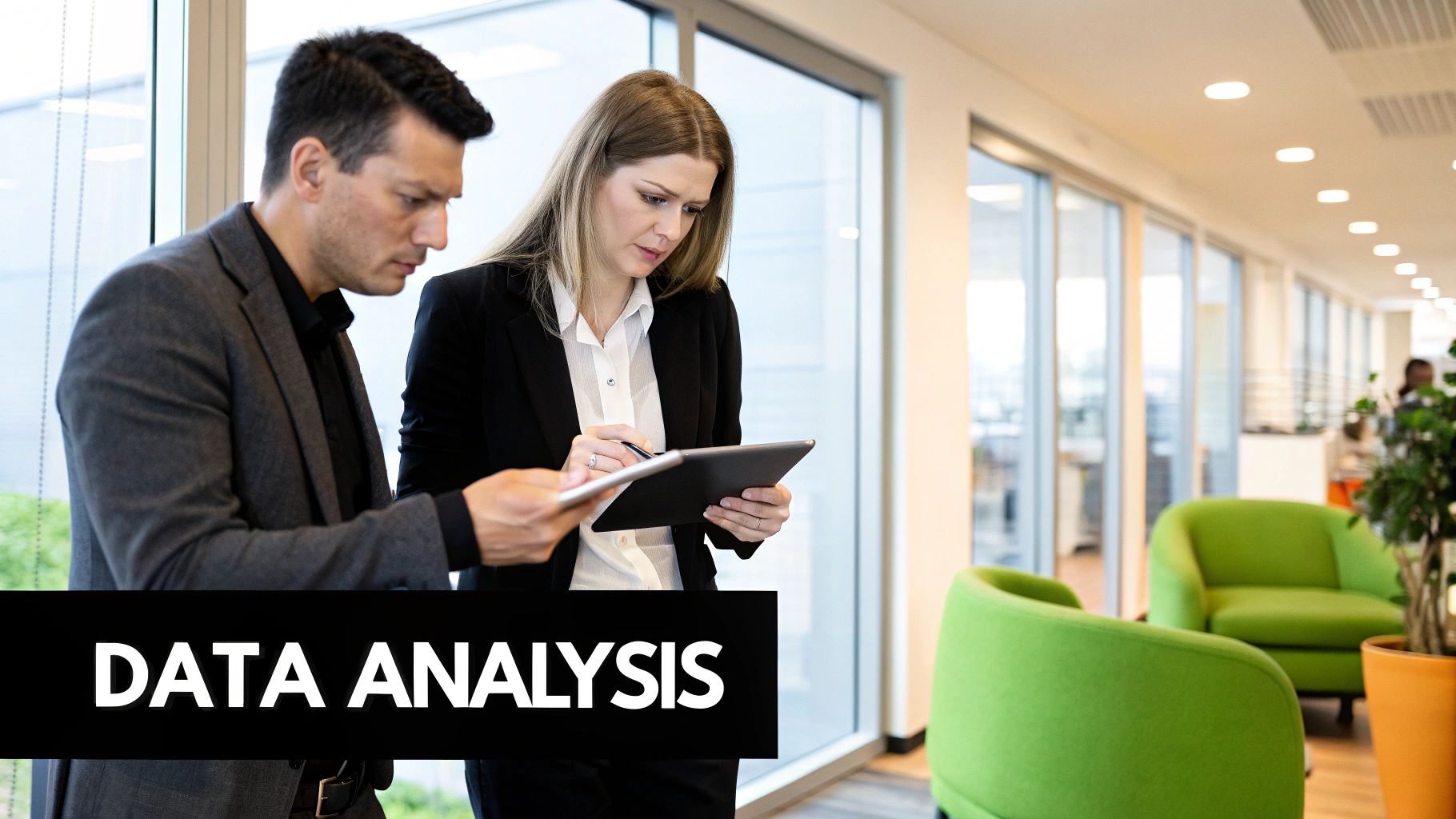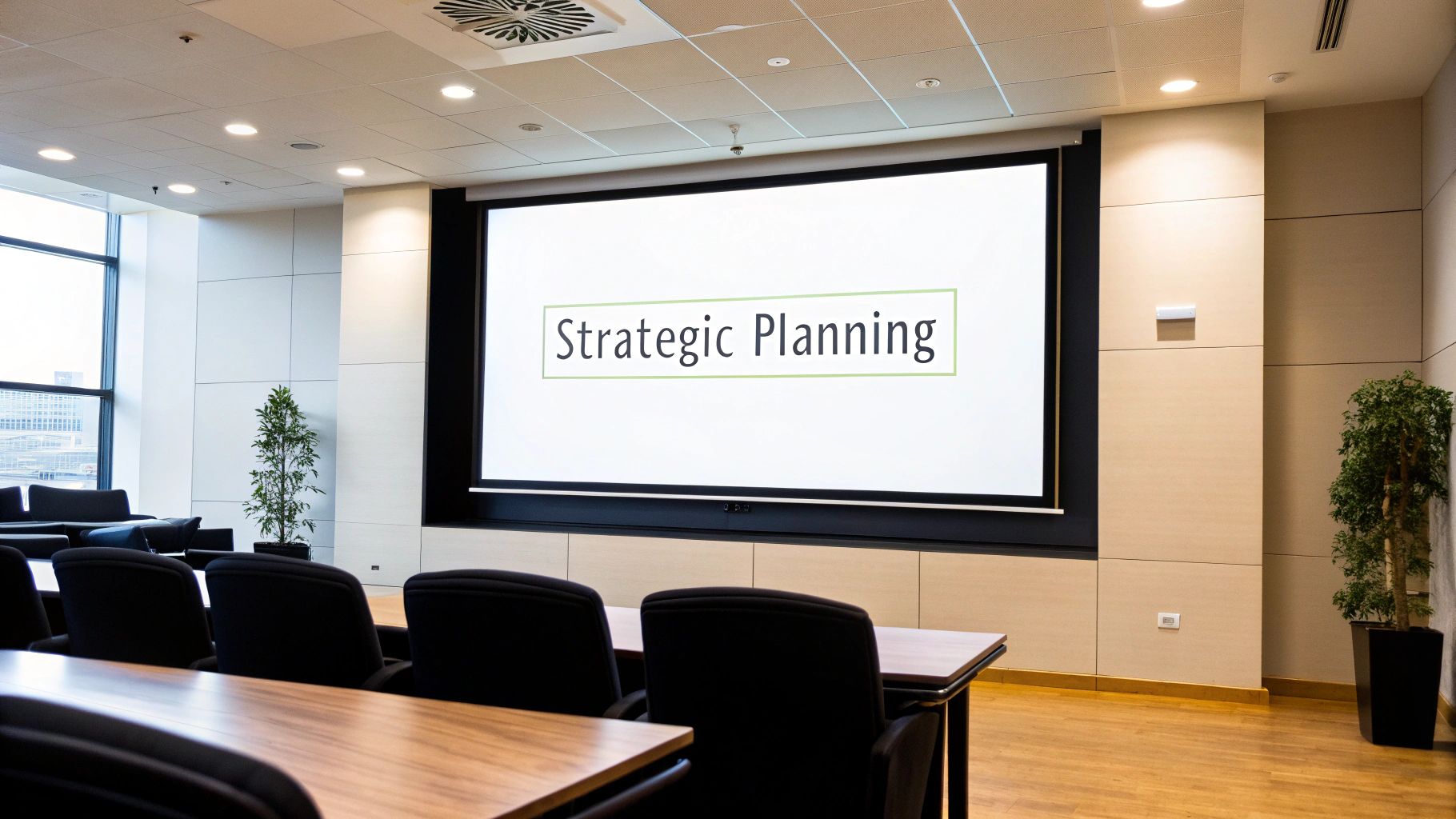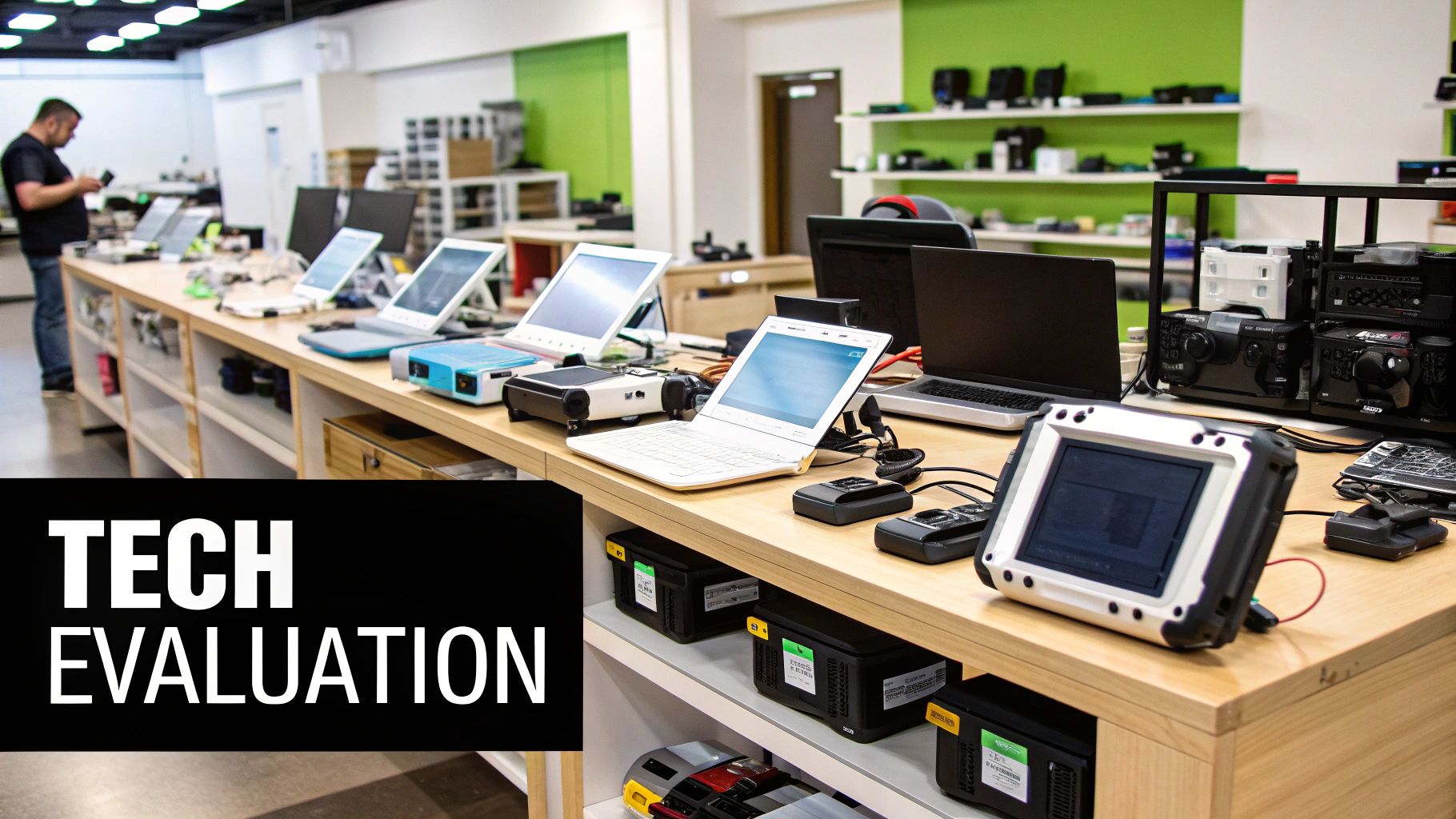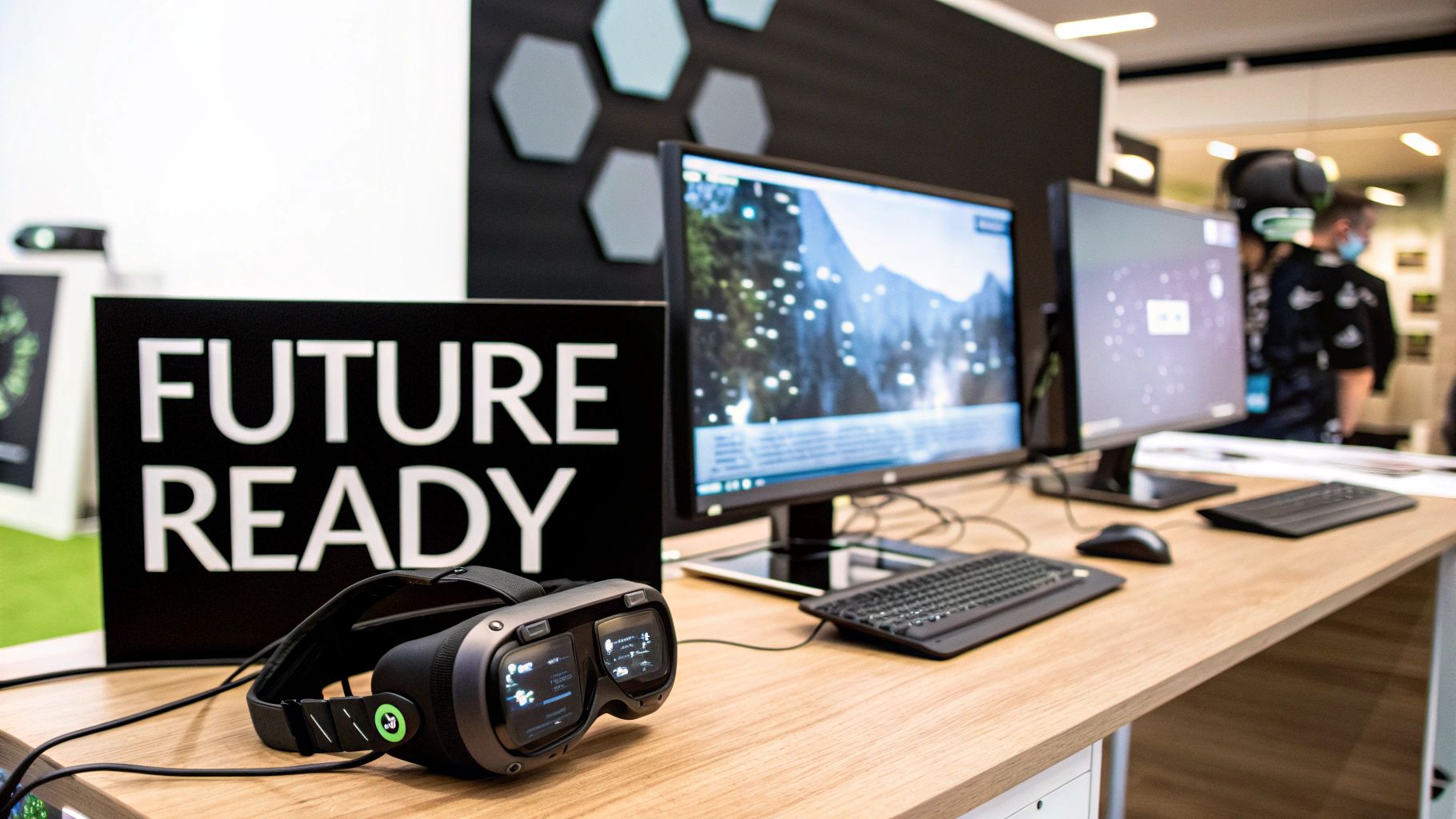Technology Assessment Framework: The Complete Guide for Modern Decision Makers
The Evolution of Technology Assessment: From Past to Present

Technology assessment frameworks help organizations evaluate and implement new technologies effectively while managing potential risks. These frameworks have come a long way since their inception, evolving to meet increasingly complex technological challenges. Understanding this evolution provides valuable context for how we evaluate technology today.
The formal assessment of technology's impact grew from recognizing that new technologies could have far-reaching effects beyond their intended purpose. Early evaluations focused heavily on identifying and mitigating potential negative consequences of technological adoption.
The field took shape in the mid-20th century, with the term "technology assessment" first coined in 1966 by Philip Yeager, an aide to Congressman Emilio Daddario. Further research on this topic shows how Daddario's work led to creating the Office of Technology Assessment (OTA), which became a model for similar programs worldwide.
Early Frameworks and Their Limitations
The first technology assessment frameworks used straightforward methods focused on direct impacts. They often followed linear evaluation models that assumed simple relationships between a technology's implementation and its effects on society. This approach proved too simplistic for real-world applications.
These early frameworks had significant blind spots. They might analyze economic benefits while overlooking environmental or social impacts. As technology began advancing more rapidly, these basic assessment methods struggled to keep up with the pace of change and complexity of new innovations.
The Rise of Modern Technology Assessment Frameworks
Today's technology assessment frameworks have evolved to handle complex, interconnected factors. Modern approaches consider a broad spectrum of impacts including social consequences, ethical implications, and environmental effects. This reflects our deeper understanding of how technologies interact with various aspects of business and society.
Current frameworks emphasize continuous monitoring and adjustment. They recognize that a technology's impact often emerges gradually and may change over time. This ongoing evaluation process helps organizations spot potential issues early and adapt their strategies accordingly. By taking this comprehensive approach, companies can better manage technology adoption while avoiding unwanted side effects.
Building Blocks of Effective Technology Assessment

A solid technology assessment framework requires multiple elements working together as a unified system. Understanding how each component contributes to the assessment process is essential for getting meaningful results. Let's examine the key building blocks that make technology assessment work.
Defining Clear Objectives and Scope
Strong technology assessment starts with well-defined goals. You need to identify exactly what questions you're trying to answer - whether evaluating potential benefits of new technology, analyzing risks of existing systems, or comparing different options. Having clear scope prevents wasted effort and enables deeper analysis of what matters most.
Key Components of a Technology Assessment Framework
After setting objectives, you need a structured approach to gather and analyze information. The main components include:
- Criteria Selection: Setting specific measures to evaluate the technology, like costs, performance metrics, security requirements, and ethical considerations
- Data Gathering: Collecting relevant information from market research, expert consultation, and internal testing to inform the assessment
- Analysis Process: Applying evaluation criteria to the data to understand potential impacts and implications
- Results Communication: Presenting findings and specific recommendations that decision-makers can act on
Methodologies and Tools
Technology assessment relies on proven methods like cost-benefit analysis, risk evaluation, and scenario planning. Many organizations use horizon scanning to spot emerging technologies and trends. The modified Delphi method helps gather input from diverse experts on policy implications. Data visualization and decision support tools also play key roles in the assessment process.
Adaptability and Iteration
Technology changes rapidly, so assessment frameworks must evolve too. Regular reviews ensure components, criteria and methods stay current. The framework should allow for updates based on feedback and lessons learned. For more details, see How to Master Technology Assessment at Hyathi. This focus on continuous improvement helps organizations make better technology decisions over time through iterative refinement of their assessment approach.
Implementing Assessment Frameworks That Drive Results
Organizations need practical approaches to turn technology assessment frameworks into valuable tools. Getting real results requires thoughtful implementation, clear processes, and ways to overcome common challenges.
Putting Assessment Frameworks into Action
The first step is connecting the assessment framework to what matters most for your organization. This means evaluating technologies based on your key priorities - whether that's finding new revenue opportunities or improving operations. Reviews should provide insights that directly support business goals.
Getting buy-in across the organization is crucial for success. Technology assessments work best when leadership, IT teams, and end users all have input and ownership in the process. Clear roles and responsibilities help everyone understand their part.
Creating Lasting Assessment Practices
To make technology assessment a core part of operations, organizations should:
- Build assessments into existing workflows
- Set up clear processes for gathering and analyzing data
- Provide proper resources for implementation and training
- Review and update practices based on feedback and results
This focus on sustainability has historical precedent. For example, the U.S. Congress created the Office of Technology Assessment in 1972 to study how new technologies affect society. Learn more about the OTA's approach.
Connecting Assessments to Business Strategy
Assessment frameworks need to support broader business planning and resource decisions. This means:
- Setting clear evaluation criteria
- Following consistent review procedures
- Having effective ways to share findings
- Linking assessment insights to strategy
The framework should help leaders make technology choices that advance organizational goals.
Overcoming Obstacles and Growing
Common implementation challenges include:
- Resistance to new processes
- Limited resources and funding
- Lack of stakeholder support
- Data collection difficulties
The key is tackling these issues proactively through strong communication and a willingness to adjust practices based on feedback. View implementation as an opportunity to improve how your organization evaluates and adopts technology.
By taking a systematic but flexible approach, organizations can build assessment frameworks that deliver meaningful results and support long-term success.
Navigating Modern Technology Assessment Challenges

As companies evaluate an increasing number of new technologies, having a strong technology assessment framework has become essential for making smart decisions. Applying these frameworks effectively requires careful attention to several key factors.
Addressing Emerging Technologies
Technologies like artificial intelligence, blockchain, and quantum computing create unique assessment challenges. Their fast evolution and unclear long-term effects make standard evaluation methods insufficient. For example, evaluating AI requires examining potential biases, workforce impacts, and broader societal effects.
These technologies are increasingly connected to each other, adding complexity to assessments. AI systems now integrate with many other platforms, requiring companies to evaluate impacts across their entire technology stack. This calls for examining technologies as part of an interconnected system rather than in isolation.
Managing Uncertainty and Incomplete Information
New technologies often lack historical data, making it hard to predict their trajectory. This means companies must combine quantitative metrics with qualitative insights and expert perspectives. Scenario planning helps organizations prepare for different possible outcomes.
Organizations need to continuously update their assessments as new information emerges. For example, the combination of AI and blockchain, as shown in Hyathi Technologies' partnership with Force Multiplier Venture Labs, requires ongoing monitoring to understand the evolving impacts.
Identifying and Mitigating Risks
New technologies offer benefits but also carry risks that must be carefully evaluated. A good assessment framework examines potential negative effects on employees, customers, and communities.
Companies should assess security vulnerabilities, ethical concerns, and regulatory requirements upfront. Early risk identification allows for better mitigation strategies and more responsible technology adoption. The OECD emphasizes that technology assessments must consider societal, economic and environmental impacts.
Capitalizing on Technological Opportunities
Beyond managing risks, assessment frameworks should help companies spot and act on new opportunities. This means looking ahead to identify promising applications that may not be obvious initially.
Strategic technology evaluation helps companies make smart investments and develop new offerings that give them an edge. Learn more about effective assessment approaches in Hyathi's technology portfolio. The key is balancing quick wins with long-term potential, while maintaining flexibility to adjust as technologies mature.
Mastering Stakeholder Engagement and Communication

Good stakeholder engagement makes technology assessments work better by turning them into team efforts that everyone supports. It's about actively working with stakeholders throughout the process, not just keeping them informed.
Identifying Key Stakeholders
The first step is figuring out who will be affected by the technology being evaluated. Key groups typically include:
- Executive Leadership: The final decision makers
- IT Teams: The technical implementers and maintainers
- End-Users: Daily users of the technology
- Customers: Those affected by the technology
- Partners: External groups whose systems connect with the technology
Each group brings unique insights that need consideration.
Building Trust and Managing Expectations
Clear, honest communication builds stakeholder trust through:
- Clear explanations of the assessment's purpose and process so everyone understands the goals
- Regular progress updates to keep everyone informed
- Active feedback collection to show stakeholder input matters
This approach helps gain support for the final recommendations.
Gathering Meaningful Input
Get stakeholder perspectives through methods like:
- Surveys: Gather broad input on specific questions
- Focus Groups: Get detailed qualitative insights
- Workshops: Enable active participation and solution development
Choose methods based on your information needs and stakeholder groups. While input matters, keep the assessment objective and evidence-based.
Communicating Complex Findings
Present results clearly through:
- Visual aids to make data easier to understand
- Different formats for different audiences (summaries, detailed reports, presentations)
- Clear next steps for technology decisions
Good communication ensures findings drive smart choices. For example, highlight efficiency gains to build support, and address concerns openly to reduce resistance.
Developing an Engagement Plan
Create a formal plan that outlines:
- Stakeholder communication preferences
- Input gathering methods
- Communication timeline
- Success metrics
A solid plan keeps engagement on track and strengthens the whole assessment process.
Measuring and Optimizing Framework Performance
A technology assessment framework needs ongoing attention to deliver the intended value. Consistent measurement, review, and enhancement help ensure it provides useful insights for decision-making. Let's explore key aspects of framework optimization.
Developing Meaningful Performance Indicators
Start by establishing clear performance metrics that connect to your organization's goals. If reducing failed technology implementations is a priority, track the success rate of projects that follow assessment recommendations. Also measure the assessment process itself - like completion time and resource usage - to identify ways to improve efficiency.
Consider tracking:
- Project outcome alignment with recommendations
- Average assessment completion time
- Resources required per assessment
- Quality of insights generated
Monitoring Performance and Gathering Input
Create a systematic approach to evaluate framework effectiveness. Collect data on key metrics regularly through:
- Project outcome tracking
- Stakeholder surveys
- Assessment insight analysis
- User experience feedback
Get input from framework users at all levels - leadership, IT teams, and end users. Ask specific questions about what works well and what needs improvement. This feedback helps pinpoint strengths and improvement opportunities.
Making Strategic Updates
Use performance data and stakeholder input to guide framework improvements. Focus on:
- Refining assessment criteria
- Streamlining data collection
- Enhancing how findings are shared
- Addressing identified gaps
For example, if assessments take too long, simplify the process or provide additional training. If certain risks are being missed, update criteria accordingly. Make changes incrementally based on data.
Evolving Assessment Practices
Technology changes constantly, so assessment frameworks must adapt too. Regularly review and update the framework to stay current with:
- New technologies
- Business needs
- Industry best practices
Balance consistency with flexibility to address emerging challenges. Document changes and train users on updates. You might be interested in: Hyathi Technologies Recognized for Cybersecurity.
Focus on continuous improvement and measuring results to keep your technology assessment framework effective for informed decision-making.
Looking to improve your technology assessment approach? Learn how Hyathi Technologies can help evaluate and implement technologies successfully.